In our fast-paced lives, maintaining a clutter-free and organized home can sometimes feel like an insurmountable challenge. The good news is that with the right strategies and a bit of commitment, you can transform your living space into a tranquil, functional haven that brings peace and serenity to your daily life. In this post, we’ll share home organization and decluttering tips to help you reclaim your space and create a harmonious living environment.
Start with a Vision
Envisioning how you want your space to look and feel is the foundational step of the entire home organization process. Without a clear vision, your efforts may lack direction and purpose. Your vision serves as your ultimate goal, guiding your decision-making as you declutter and reorganize. It’s about defining what you want to achieve with your space.
To do that, take some time to imagine what your home would ideally look like once it’s organized. Consider the overall atmosphere, the level of tidiness, and the functionality of each room. Visualize the lifestyle you want to support through this organized space.
Then, you need to identify you priorities! Determine the most important aspects of your vision. For example, do you want your living room to be a cozy and welcoming space for family gatherings, or do you prioritize having a clutter-free workspace for productivity? If you share your living space with others, ensure that everyone’s needs and preferences are taken into account in your vision. It’s important that the vision aligns with the expectations and comfort of all residents.
Don’t forget to gather inspiration! Look for inspiration in interior design magazines, websites, or social media platforms. Collect images and ideas that resonate with your vision. This can help you better articulate your desired style and aesthetic.

The Art of Decluttering
Decluttering is the process of systematically eliminating items in your home that are no longer needed, useful, or loved. It’s crucial because a clutter-free environment provides several benefits, including reduced stress, improved focus, and a greater sense of control over your living space. Decluttering also creates space for the things that truly matter and align with your vision for your home.
To do that, Start with One Room! Decluttering can feel overwhelming if you attempt to tackle your entire home at once. Begin by selecting one room or a specific area within a room as your starting point. Focusing on a smaller area makes the task more manageable and less daunting.
As you go through the items in the chosen room, ask yourself if each item serves a specific purpose in your life. If an item is no longer useful, it may be time to let it go. Moreover, consider Marie Kondo’s philosophy! Think whether an item brings you joy. Do you have a strong emotional connection to it, or does it simply take up space?
Organize your decluttering efforts into categories, such as clothing, books, electronics, and personal items. This helps you maintain focus and prevents decision fatigue. then, sort items into three categories: those you can donate or give away, those you can recycle, and those that need to be discarded.
Remember that decluttering is a gradual process, and it’s okay to take your time. Be patient with yourself, and acknowledge the emotional attachments you may have to certain items. The key is to align your living space with your vision, making it a more functional, organized, and enjoyable place to live.
Smart Storage Solutions
One of the critical aspects of home organization is making the most of the available space by implementing intelligent storage solutions. Efficient storage helps prevent clutter, allows you to find items easily, and optimizes your space’s functionality. It’s about creating a place for everything and ensuring that everything is in its place.
Begin by assessing the specific storage needs of each room or area in your home. Consider what items need to be stored and the frequency of use. This will help you choose the most suitable storage solutions.
Wall-mounted shelves, hanging organizers, and tall storage units make effective use of vertical space, allowing you to store more without taking up valuable floor space. Consider installing shelving units on empty walls to display and organize items like books, decorations, or kitchen supplies.
Invest in furniture with hidden storage compartments or dual-purpose functionality. For example, ottomans with hidden storage space can store blankets or toys, while a coffee table with built-in shelves or drawers can keep living room essentials organized. Utilize the space under your bed by using storage bins or drawers. This area is often underutilized and can store items like clothing, shoes, or seasonal bedding.
Customize your closet with organization systems. Install shelves, drawers, hanging rods, and hooks to make the most of your closet space. Consider investing in modular or adjustable closet systems for adaptability. Use decorative baskets and bins to corral and organize smaller items like toys, craft supplies, or accessories. Labeling these containers makes it easy to locate items quickly.
Invest in label makers, adhesive labels, or even simple masking tape and markers. Apply labels to containers, shelves, drawers, and any other storage spaces. Ensure that labels are specific and descriptive. Maintain a consistent labeling system throughout your home, using the same format and style.
Group similar items together. For example, in your pantry, categorize items like canned goods, grains, snacks, and spices in distinct areas. Create logical categories based on how you use the items. In the kitchen, you might have categories like baking supplies, cookware, utensils, and cleaning products.
Investing in smart storage solutions is a strategic and practical approach to home organization. It not only helps you create a more organized and clutter-free living space but also ensures that your home is optimized for your specific needs and lifestyle.
Closets and Wardrobes Organization
Begin by categorizing the items within your closet or wardrobe. Common categories include clothing, shoes, accessories, and bags. This step helps you see the scope of what you’re dealing with.
Invest in storage containers, such as clear plastic bins or fabric baskets, to keep items neatly separated and easily accessible. Use these containers for items like scarves, belts, and smaller accessories.
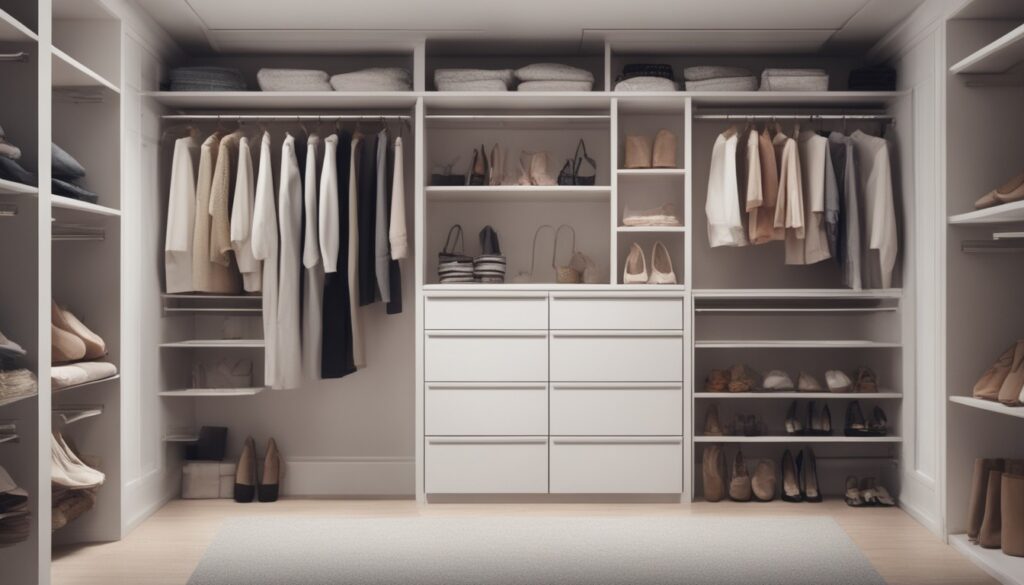
Install hooks or dividers within the closet to create designated spaces for specific items. For instance, hooks can hold scarves, hats, or bags, while dividers can separate stacks of folded clothing. Use slimline hangers to maximize hanging space. These hangers take up less space compared to bulky plastic or wooden hangers, allowing you to fit more clothing in your closet. They also create a uniform, streamlined look.
Arrange your clothing by color to make it easier to find and put together outfits. This can also create an aesthetically pleasing and organized appearance. If you have limited closet space, consider seasonal rotation. Store out-of-season clothing in under-bed storage or in bins in another part of your home. Use shoe racks, over-the-door organizers, or clear shoeboxes to keep your shoe collection tidy and visible. Organizing shoes prevents them from getting damaged or lost.
Label storage containers, shelves, or drawers so that you can quickly identify the contents. This makes it easier to maintain an organized closet over time.
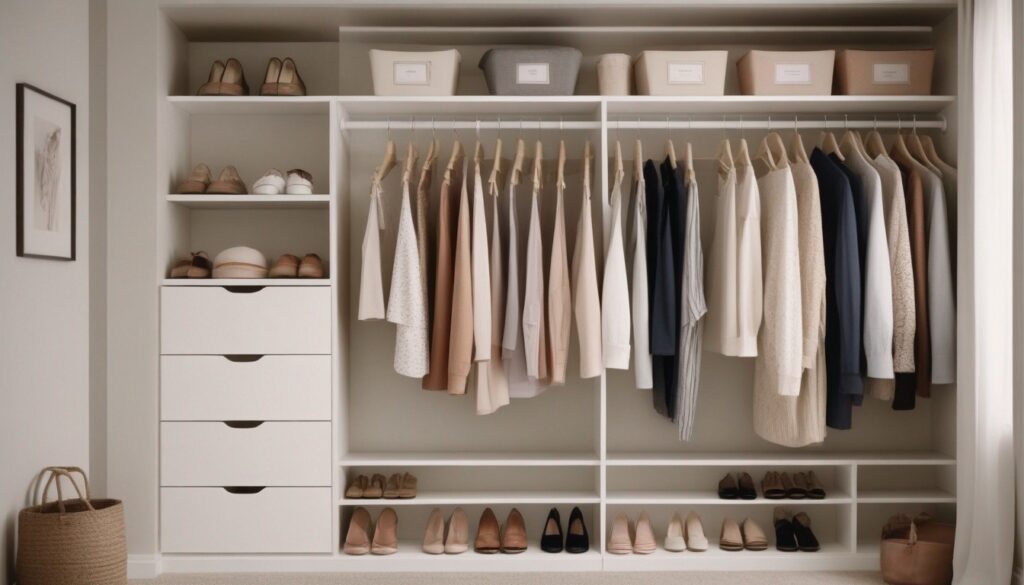
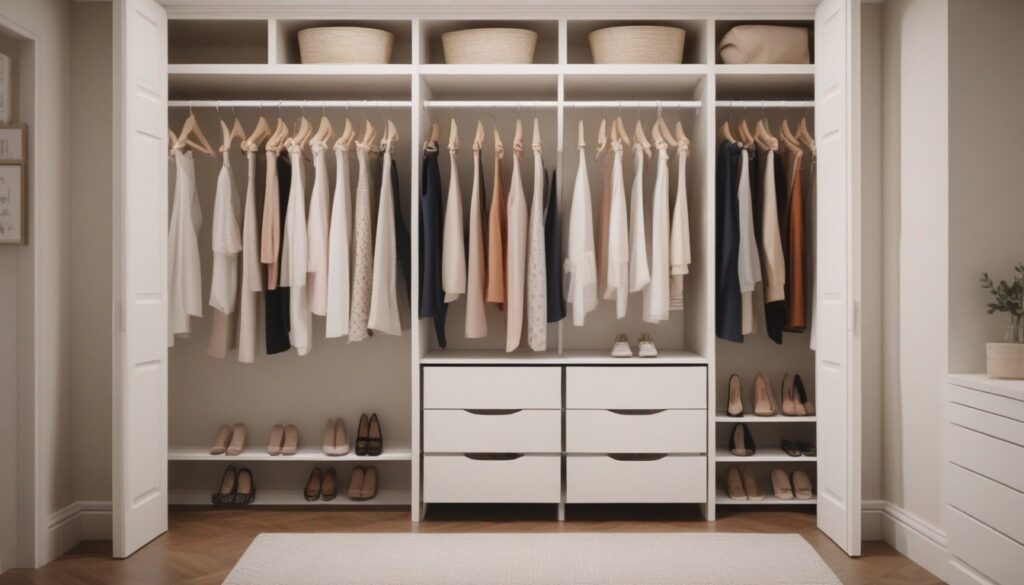
Kitchen Efficiency
The kitchen is often the heart of a home, and efficient organization in this high-traffic area is essential for a smooth cooking and meal preparation experience. Designate specific areas for baking and cooking. Keep baking supplies, like measuring cups and mixing bowls, together in one area. Likewise, group cooking utensils and pots and pans near your stovetop or oven.
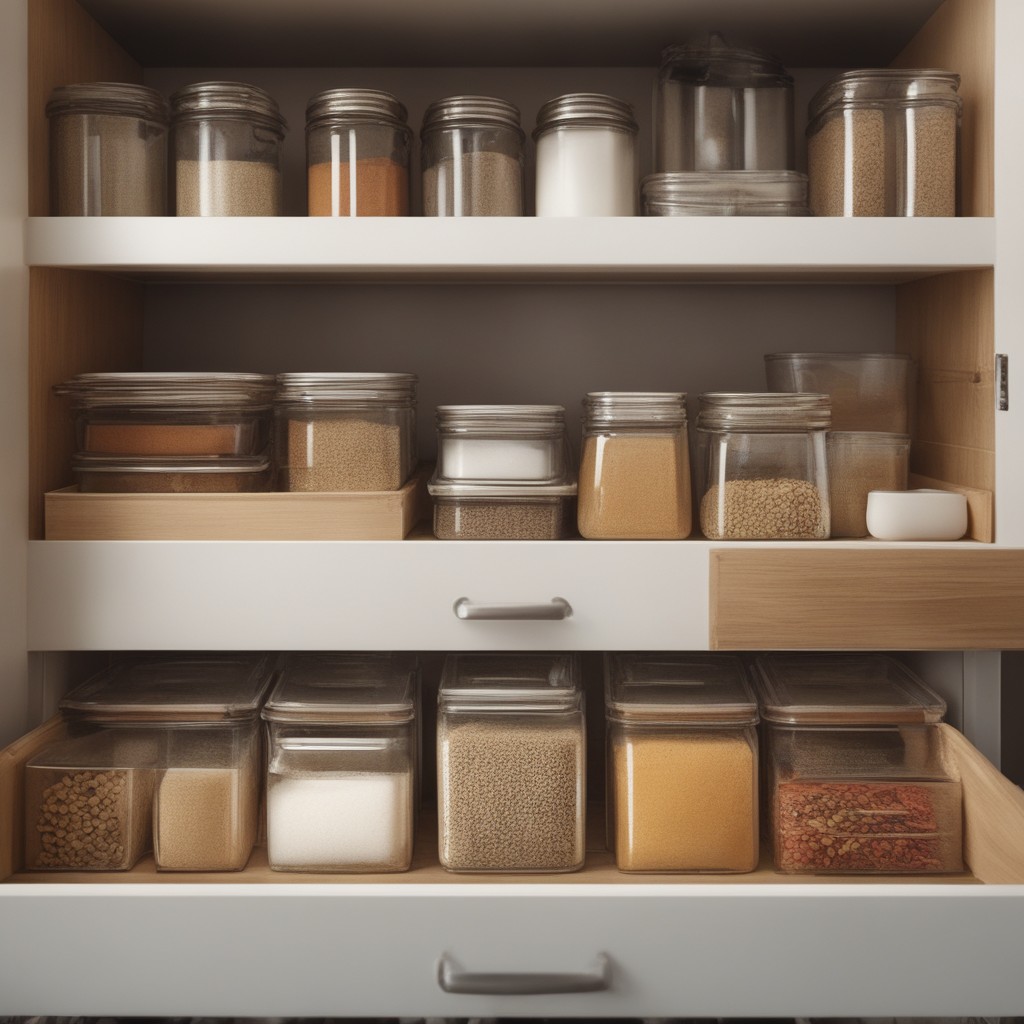
Store pantry staples like flour, sugar, rice, pasta, and snacks in clear, airtight containers. Clear containers allow you to see the contents, and airtight seals keep food fresh longer. Label containers and shelves to quickly identify the contents. This is especially important for pantry items, spices, and storage containers. Labels prevent confusion and make it easier to maintain the organization over time.
Use dividers, plate racks, or adjustable shelving in your cabinets to keep dishes and glassware neatly stacked and easily accessible. Install pull-out trays or shelves under the sink to maximize storage space for cleaning supplies, trash bags, and other essentials.

Don’t forget to allocate a designated area for waste and recycling bins. Make sure it’s easily accessible and appropriately labeled for efficient waste management.
Vertical Storage in Bathrooms
Small bathrooms often lack the luxury of ample floor space, making vertical storage a game-changer. Maximizing vertical space ensures that you can store essential bathroom items while keeping the area organized, visually appealing, and easy to use.
To do that, Install floating shelves on empty wall space above the sink or toilet. These shelves provide a clean and minimalistic look while offering space for storing toiletries, decor, and frequently used items. Consider also installing tall cabinets or linen towers in your bathroom. These can be placed near the vanity, in corners, or any available wall space. Tall cabinets are perfect for storing towels, cleaning supplies, and other bathroom essentials.
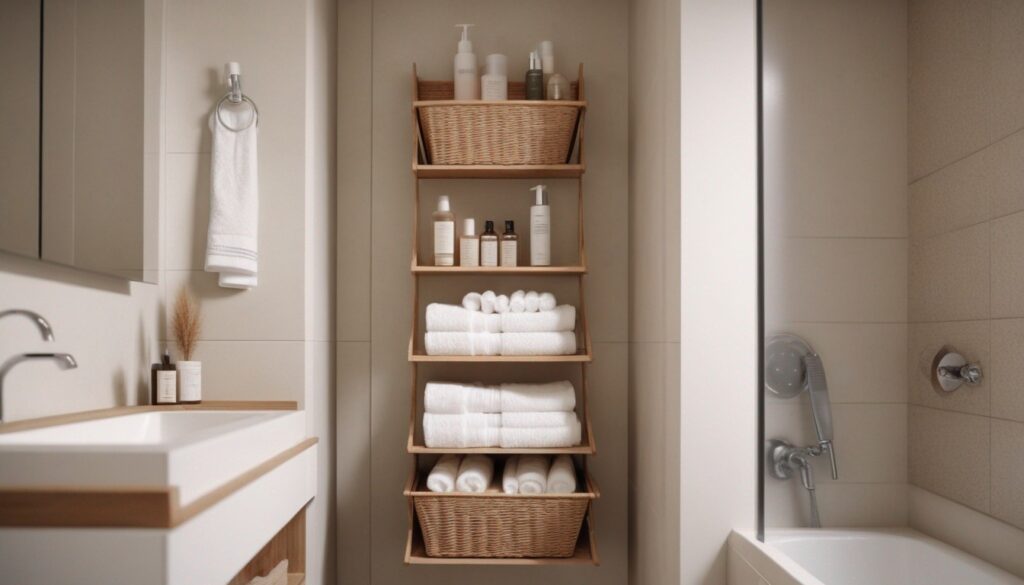
Install hooks on the inside of cabinet doors or on the wall to hang items like towels, robes, or accessories. Utilizing vertical space on the backs of doors is an excellent way to store items without taking up valuable wall space. Use baskets or bins on your shelves to keep items neatly organized and within easy reach. Clear or labeled bins make it effortless to locate specific items.
In small bathrooms, over-the-toilet shelving units are a smart choice. They provide additional storage space without sacrificing floor space. Consider a medicine cabinet with built-in storage. These cabinets are designed for vertical storage and are perfect for keeping medicines, toiletries, and personal care items neatly organized. Use also corner shelves to make the most of unused corner space in your bathroom. They can hold decorative items, bathroom supplies, or even plants.
Don’t forget the vertical storage options in the shower. Install shower caddies or built-in niches for storing shampoo, soap, and other shower essentials.
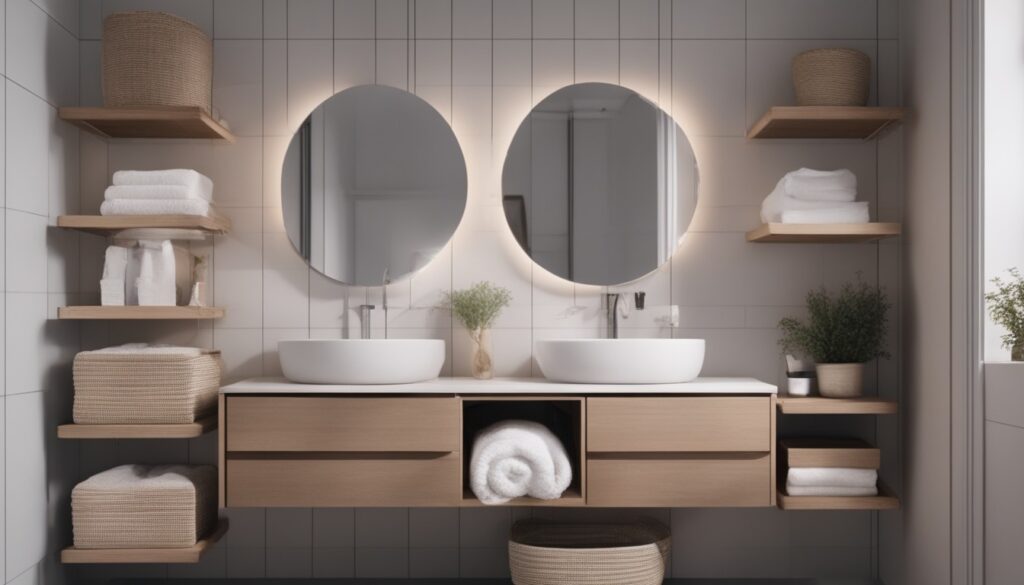
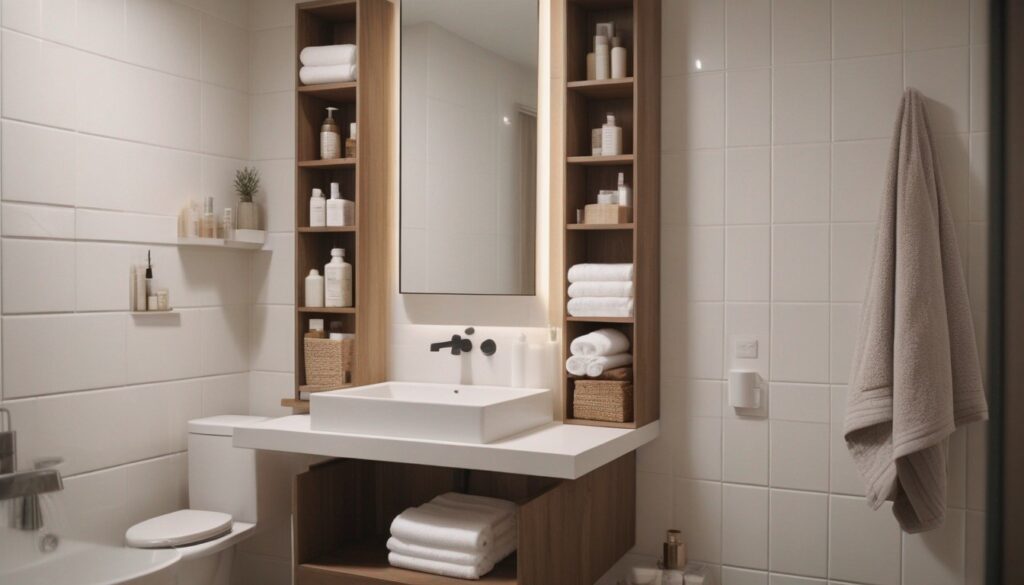
Digital Decluttering
Just as physical clutter can make your living space feel chaotic, digital clutter can overwhelm your online experience, making it difficult to find important files, stay organized, and stay focused. Digital decluttering helps streamline your digital life, making it more efficient and less mentally taxing.
Organize your digital files into folders with clear, descriptive names. This makes it easier to find documents, photos, and other files when you need them. Go through your files and delete any that you no longer need. Be sure to empty the trash or recycle bin afterward. Unsubscribe from email lists and newsletters that you no longer find valuable. This reduces the influx of unwanted emails.
Use folders, labels, or tags to categorize and sort your emails. This helps you quickly locate specific messages. Regularly clear out your email inbox and archive or delete emails you no longer need. Aim to maintain a clean and organized inbox. Consider using a password manager to store and organize your login credentials securely. This reduces the mental burden of remembering multiple passwords.
Sort and organize your digital photos and videos into folders or albums, making them easier to access and enjoy. Back up important data, documents, and files regularly to prevent loss in case of hardware failure or data corruption. Review your social media profiles and unfollow or unfriend accounts that no longer add value or align with your interests.
Regular Maintenance
Home organization is not a static state but a dynamic one. Life is always changing, and our homes need to adapt accordingly. Regular maintenance ensures that your space continues to meet your needs, remains clutter-free, and functions efficiently. It prevents the accumulation of disorganization and saves you from having to undertake massive decluttering projects in the future.
So, don’t forget to set a schedule! Dedicate a specific time each week for quick touch-ups. This can be a short session where you address minor organization issues that have arisen during the week. Make it also a habit to tidy up as you go about your daily activities. If you notice items out of place, return them to their designated spots.
Minimalism and Mindfulness
Embracing minimalism and practicing mindfulness in your consumption habits are essential for preventing clutter and maintaining the organization of your living space. It encourages a more deliberate approach to acquiring possessions, ensuring that each item you bring into your home serves a clear purpose and aligns with your vision of a tidy and functional space.

– To be mindfull, ehenever you consider buying something new, pause and ask yourself whether the item serves a practical purpose. Will it enhance your life or the functionality of your space?
– Rather than accumulating a multitude of items, focus on acquiring higher-quality, longer-lasting possessions. Quality items are less likely to clutter your space and require frequent replacement.
– Practice the One-In, One-Out Rule!
– Conduct periodic assessments of your belongings and identify items that you no longer need or use. Donate or recycle them to keep your space clutter-free.
– Regularly revisit your vision for your home and your life. Does it align with the possessions and lifestyle you’re pursuing?
Seek Inspiration
Seek inspiration from various sources, such as books, blogs, magazines, and other platforms dedicated to home organization and interior design. By doing so, you can discover new ideas, innovative storage solutions, and creative ways to adapt them to your specific living space.
Browse books, magazines, and blogs dedicated to home organization and interior design. You can also explore platforms like Pinterest and Instagram, where you’ll find countless photos and ideas. As you come across inspiring ideas, take notes or save images that catch your eye. Consider creating a digital or physical inspiration board to gather your favorite concepts in one place. Consider how the ideas you encounter can be adapted to your specific living space. Think about your existing layout, available storage, and the needs of your household.
Prioritize the solutions that align with your vision for an organized and functional living space. Identify the ones that will have the most significant impact on your daily life. Create a plan for implementing the ideas you’ve gathered. Start with one or two changes at a time, allowing you to gradually incorporate them into your home.
By following these home organization and decluttering tips and implementing practical storage solutions, you can create a living space that promotes relaxation, productivity, and a sense of well-being. Remember that it’s not about perfection but about making your space work for you and enhancing your overall quality of life. An organized and functional home is a canvas for a more peaceful and mindful lifestyle.
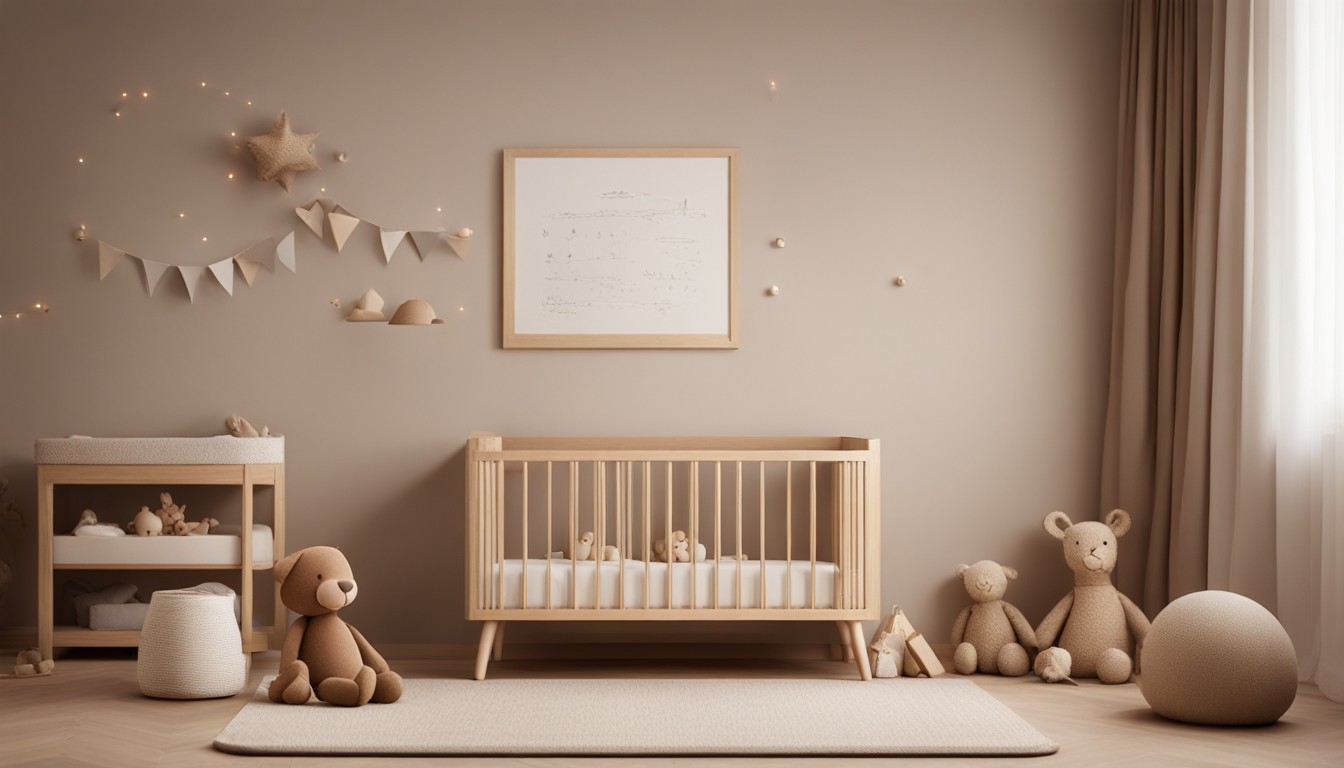
Leave a Reply